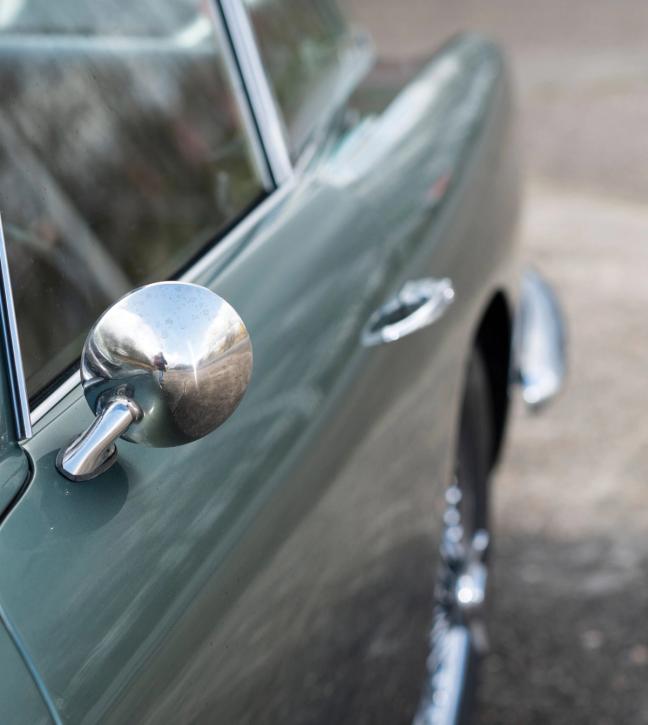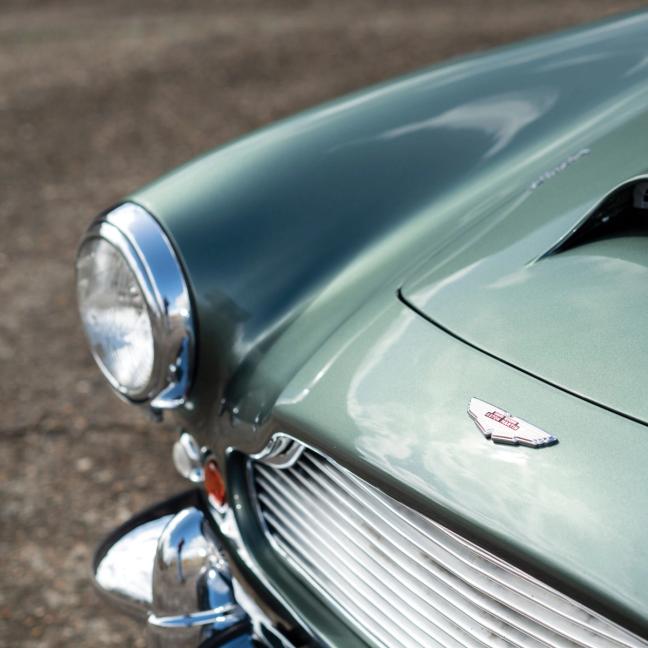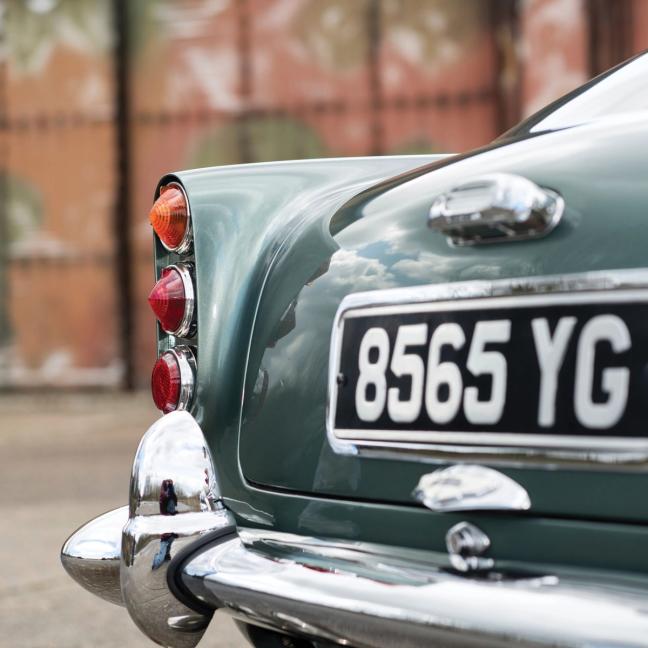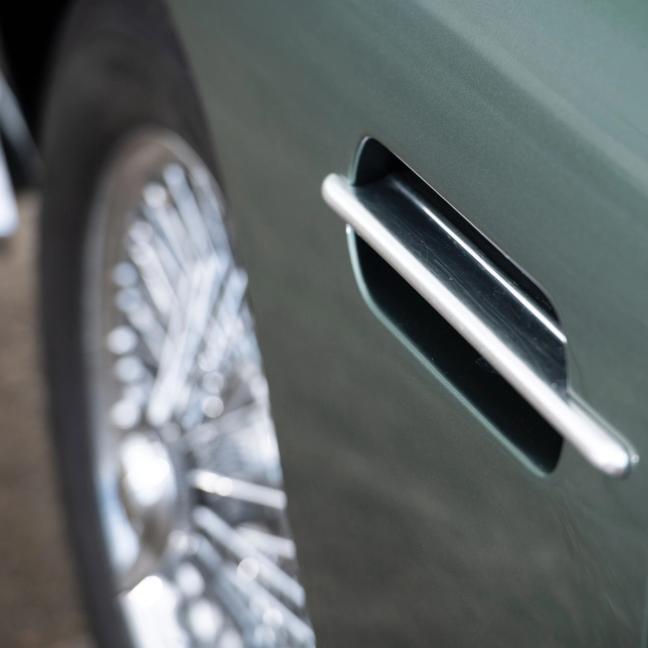Here’s a story we’ll wager you’ve never heard. During the preliminary shoots for 1964’s Goldfinger, and before Aston Martin’s iconic DB5 was ready to roll off the production line, the British car brand offered the production team another car; its existing DB4. And that Aston Martin was the first Sean Connery’s superspy drove on a Bond set.
In Ian Fleming’s original novel, of course, Bond drove a DB Mark III. And, as anyone who’s seen Goldfinger’s iconic Furka Pass sequence will tell you, Connery gets behind the wheel of a fabled DB5 in the finished cut. But the Aston Martin DB4 was the unseen, under-appreciated missing link. And, despite its important place in both Bond and British motoring lore, it has been all but forgotten.


The DB4 was the first Aston Martin to carry a new form of ‘Superleggera’ bodywork from Carrozzeria Touring. It was a pioneering process; one in which light alloy panels were fixed to a framework to reduce weight and improve performance. And these panels themselves were crafted in a more continental way than previous Astons — ensuring that the DB4 turned heads when it was launched at the 1958 London Motor Show.
For five years, the DB4 was produced in earnest at the automaker’s Newport Pagnell works in Buckinghamshire. And, while the sloping, sleek silhouette of the model — retrospectively reminiscent of the DB5 — initially attracted potential buyers, it was what was under the bonnet that really gripped them.



A 3.7 litre, straight-six engine, the DB4’s punchy powertrain was designed by Polish-born race driver Tadek Marek. With a cylinder head and block cast from aluminium alloy, it was mechanically miles ahead of its predecessor, the DB Mark III.
Elsewhere on the car, Aston Martin had given its DB4 servo-assisted disc brakes, ball-jointed wishbones and rack-and-pinion steering. It also rode on Avon TurboSpeed tyres. Aficionados of the marque split the car into five unique ‘series’ — each differentiated by subtle styling changes made during the production period.
The DB4 Series II, for example, was given window frames where the Series I had none. The Series III bettered the Series II by mounting its new three-lamp taillights on a chrome backing plate. The Series IV adopted a barred grille over the Series III’s ‘egg crate’ design’. And the Series V was given a taller and longer body to provide more interior space, and added aerodynamic advantages.

The model seen here, a Series IV, was also one of the first DB4s to be fitted with a much-needed oil cooler — as earlier models tended to overheat quickly. And, aside from the sporty DB4 convertible and seriously slick Aston Martin DB4 GT Zagato, it’s an exemplary example of one of the vintage Aston’s most coveted models.
Unfortunately, only 1,185 DB4s were ever produced — and only a fraction of those Series VI models. That means that, whenever these cars come to market, collectors still clamour for them. This particular car went under the hammer at RM Sotheby’s late last decade, and sold for over half a million Euros.


But, even if you can’t stump up the money to own a true piece of overlooked Aston Martin history, at least acknowledge and appreciate that this was the precursor to that sleek DB5 that most fans know and love.
Here are Gentleman’s Journal, the pioneering DB4 holds a special place in our hearts. And, while we know that James Bond was famous for his gambling prowess, we’ve always thought this the one time he should’ve stuck…
Want more 007? Here’s every bottle of champagne James Bond ever uncorked…
Become a Gentleman’s Journal member. Find out more here.

Become a Gentleman’s Journal Member?
Like the Gentleman’s Journal? Why not join the Clubhouse, a special kind of private club where members receive offers and experiences from hand-picked, premium brands. You will also receive invites to exclusive events, the quarterly print magazine delivered directly to your door and your own membership card.


